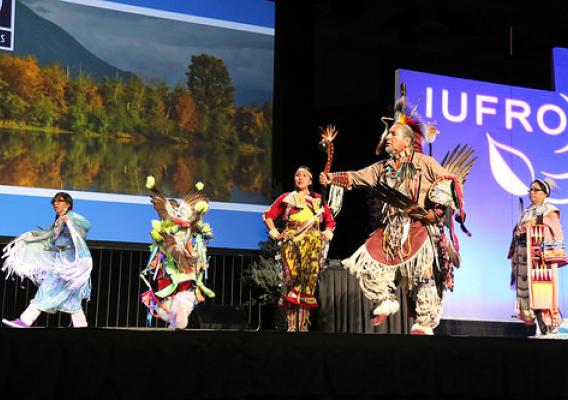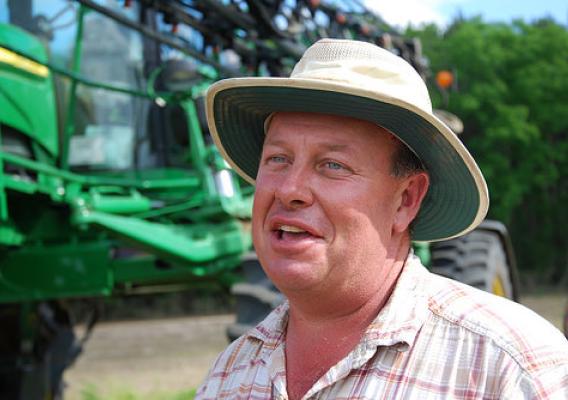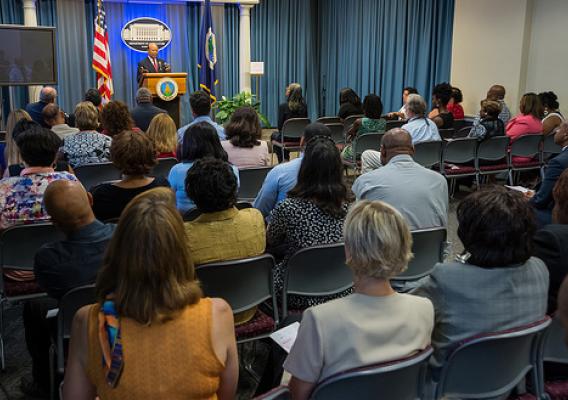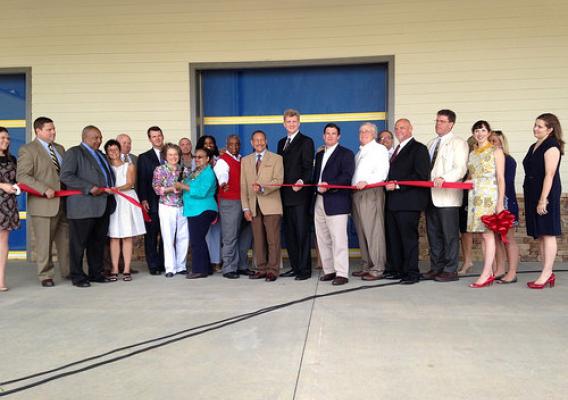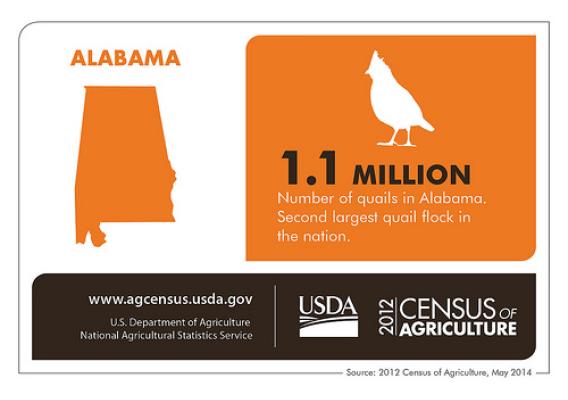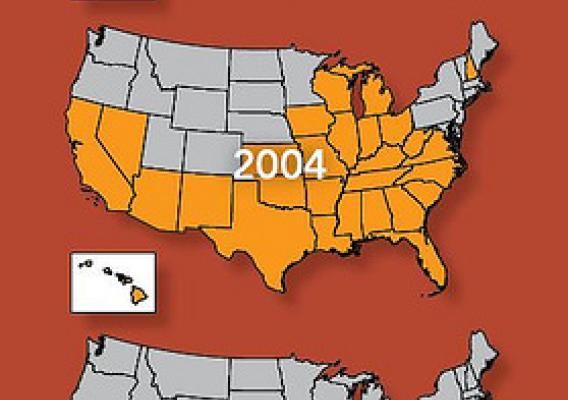The Census of Agriculture is the most complete account of U.S. farms and ranches and the people who operate them. Every Thursday USDA’s National Agricultural Statistics Service will highlight new Census data and the power of the information to shape the future of American agriculture.
Alabama may be known as the Cotton state, but there’s a lot more to our agriculture than cotton, a point reinforced by the data in the most recent Census of Agriculture. While more than 376,000 acres of nearly nine million acres of farmland in the state are dedicated to cotton farming, there are now more farms growing corn (2,112 farms) and soybeans (1,502 farms) in Alabama than those growing cotton (925 farms).
All in all, it was great to see how well our farming is doing, especially considering that in 2012 we saw one of the worst droughts in history. More than 90 percent of Alabama was affected by the drought that year. Despite these tricky conditions, our farmers sold more than $5.5 billion worth of agricultural products in 2012, a 26 percent increase from the previous census, taken in 2007.

